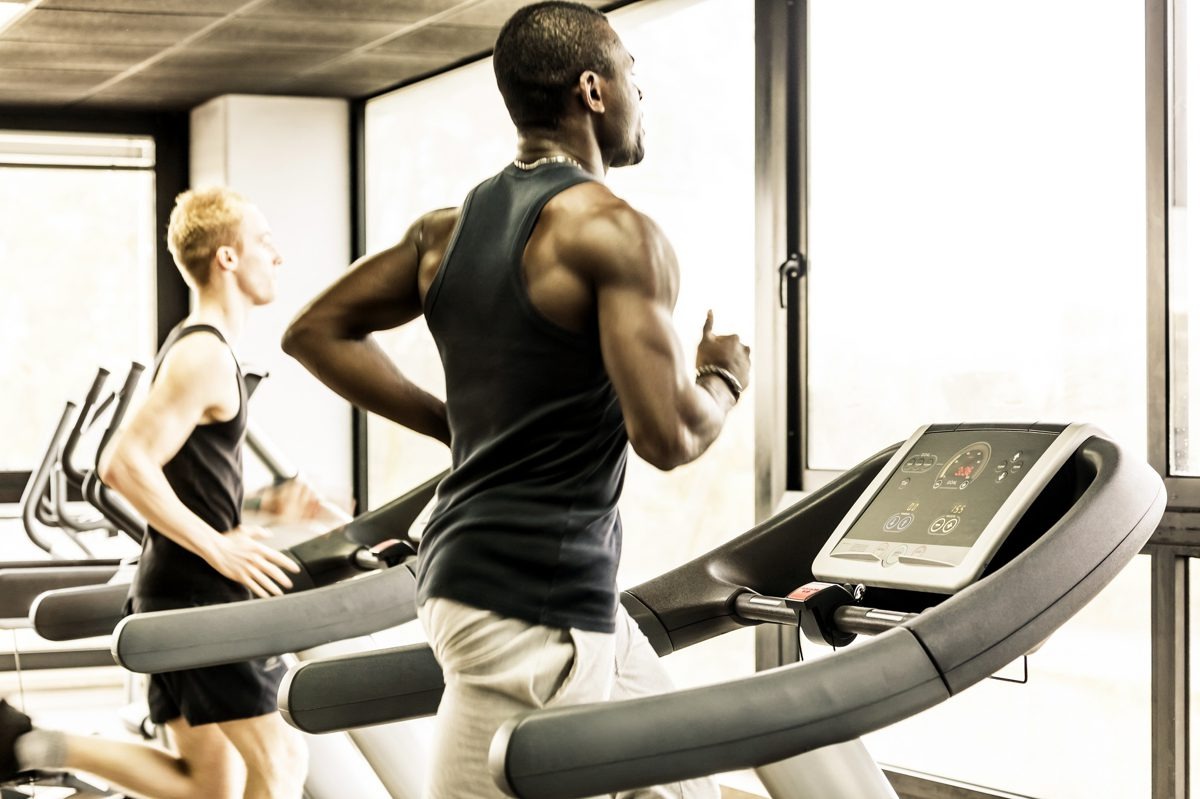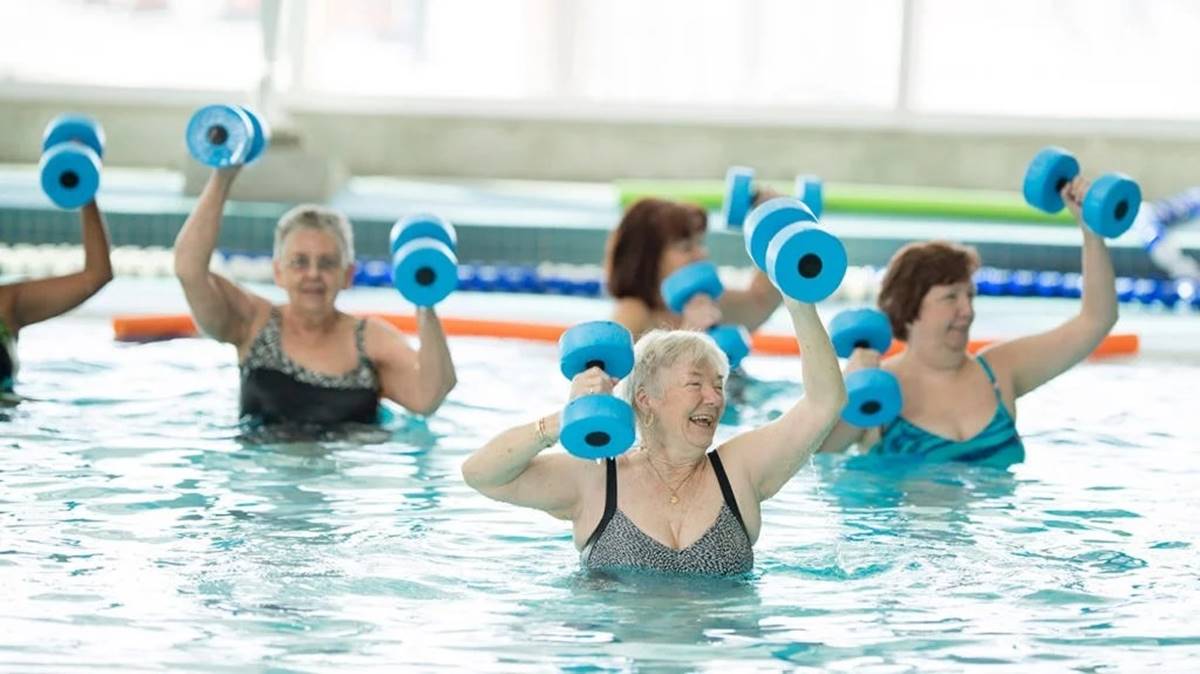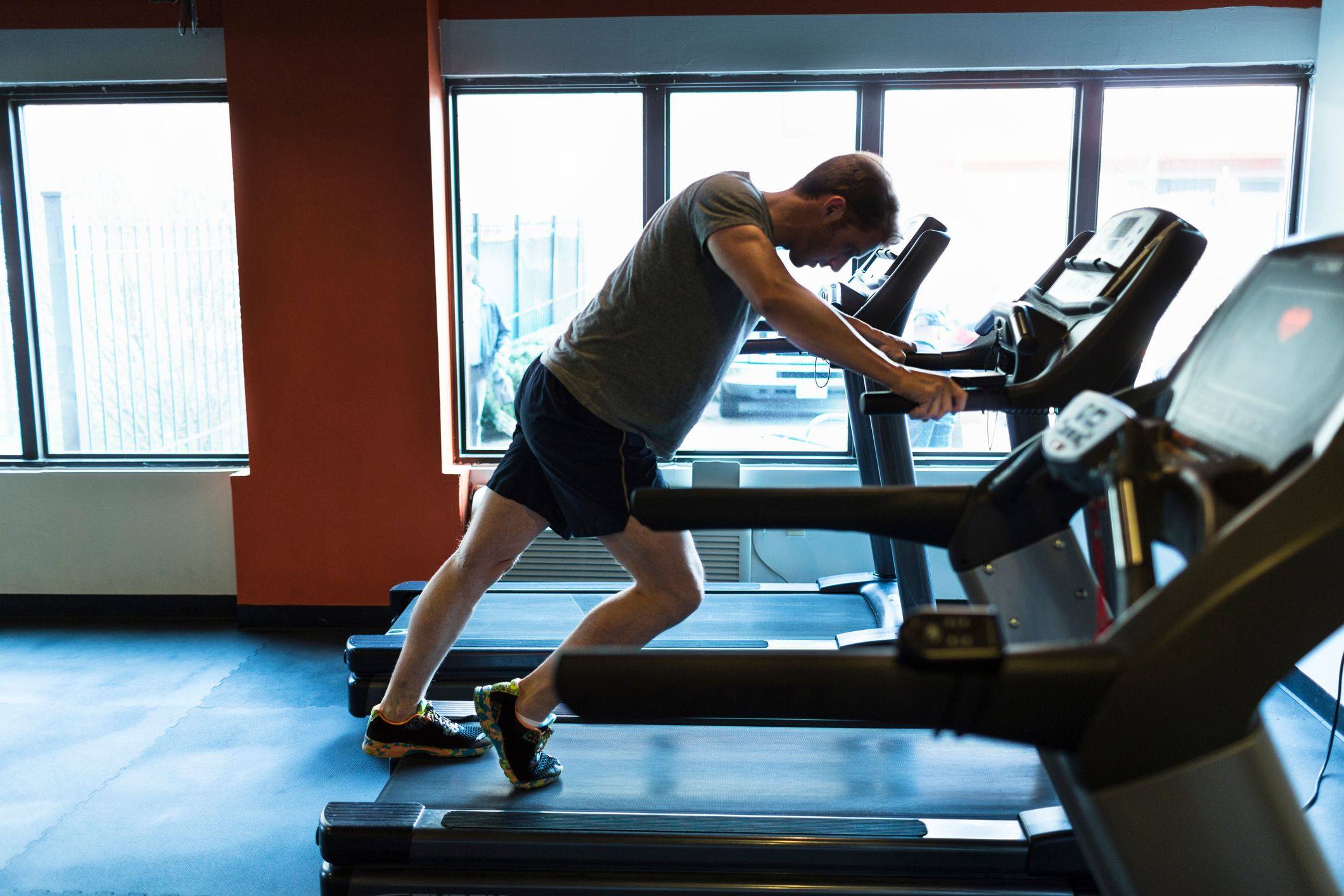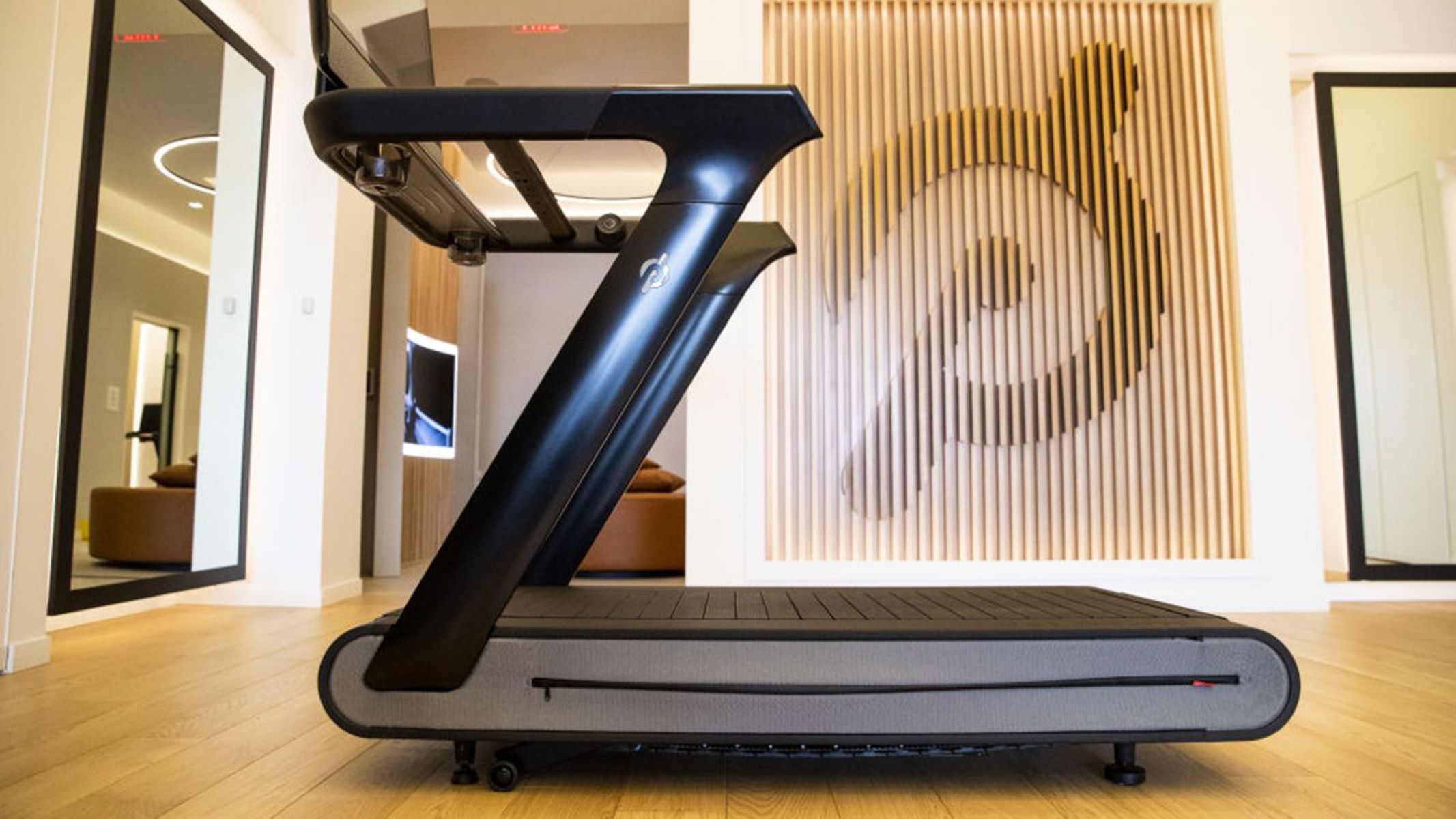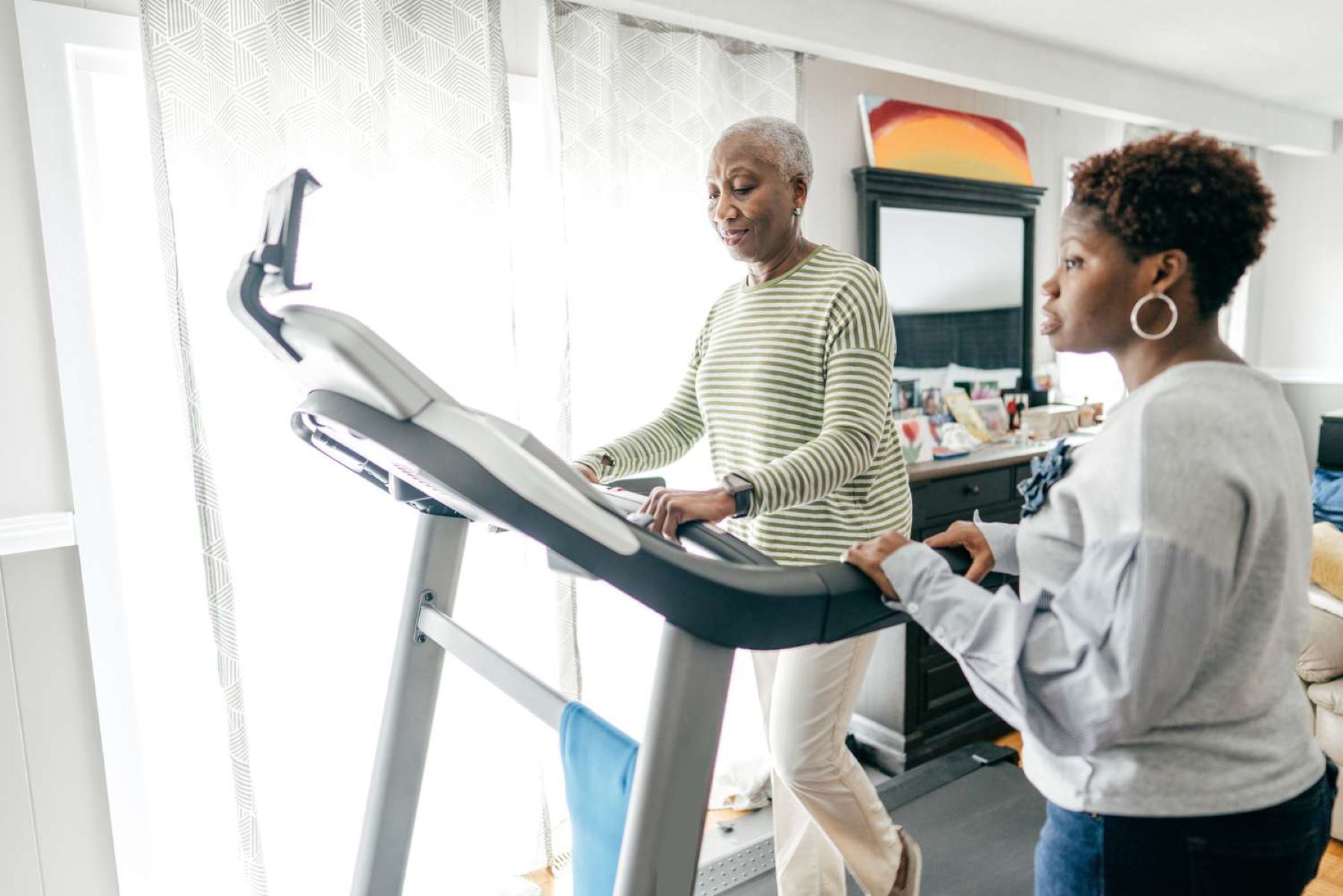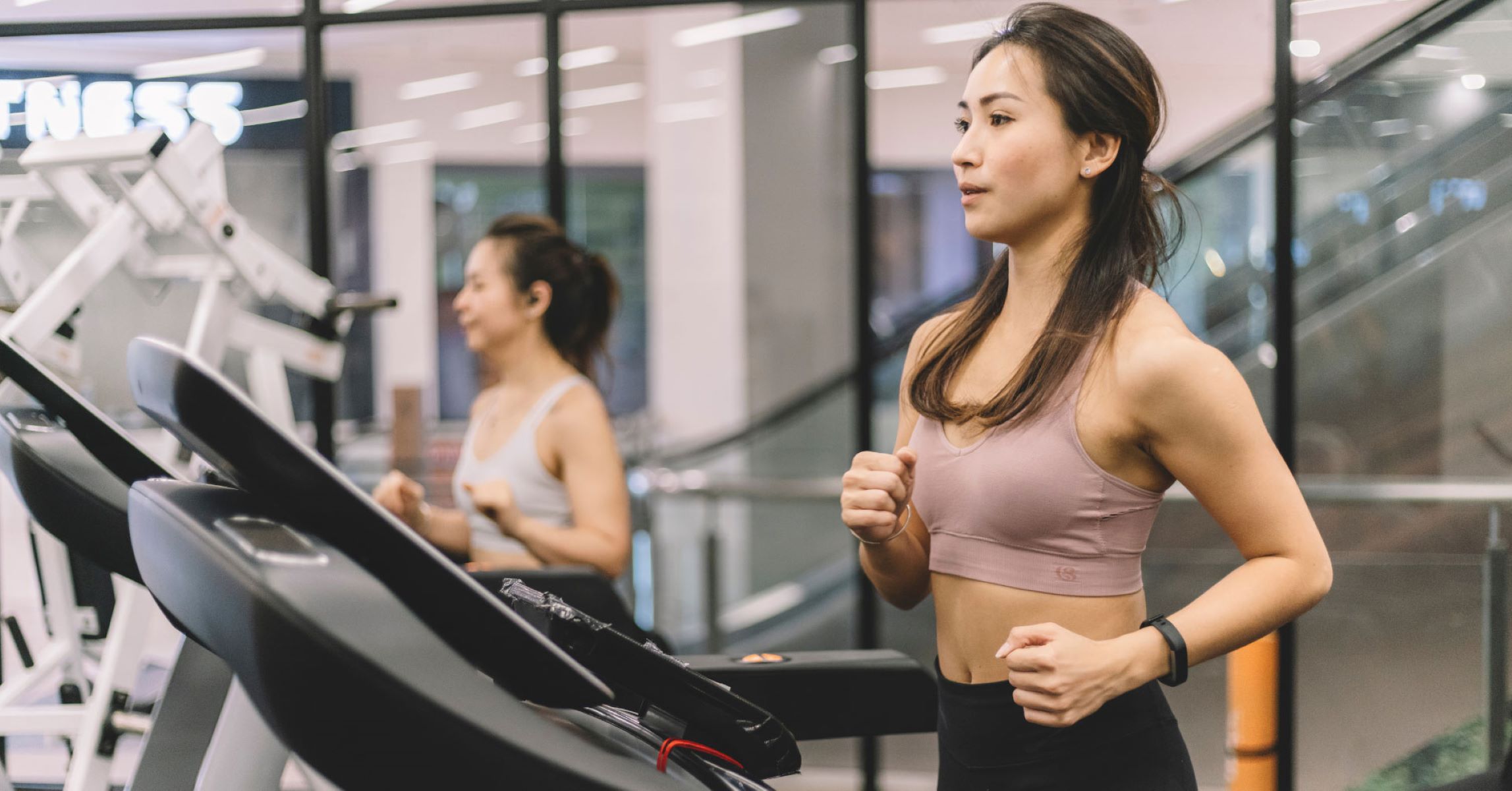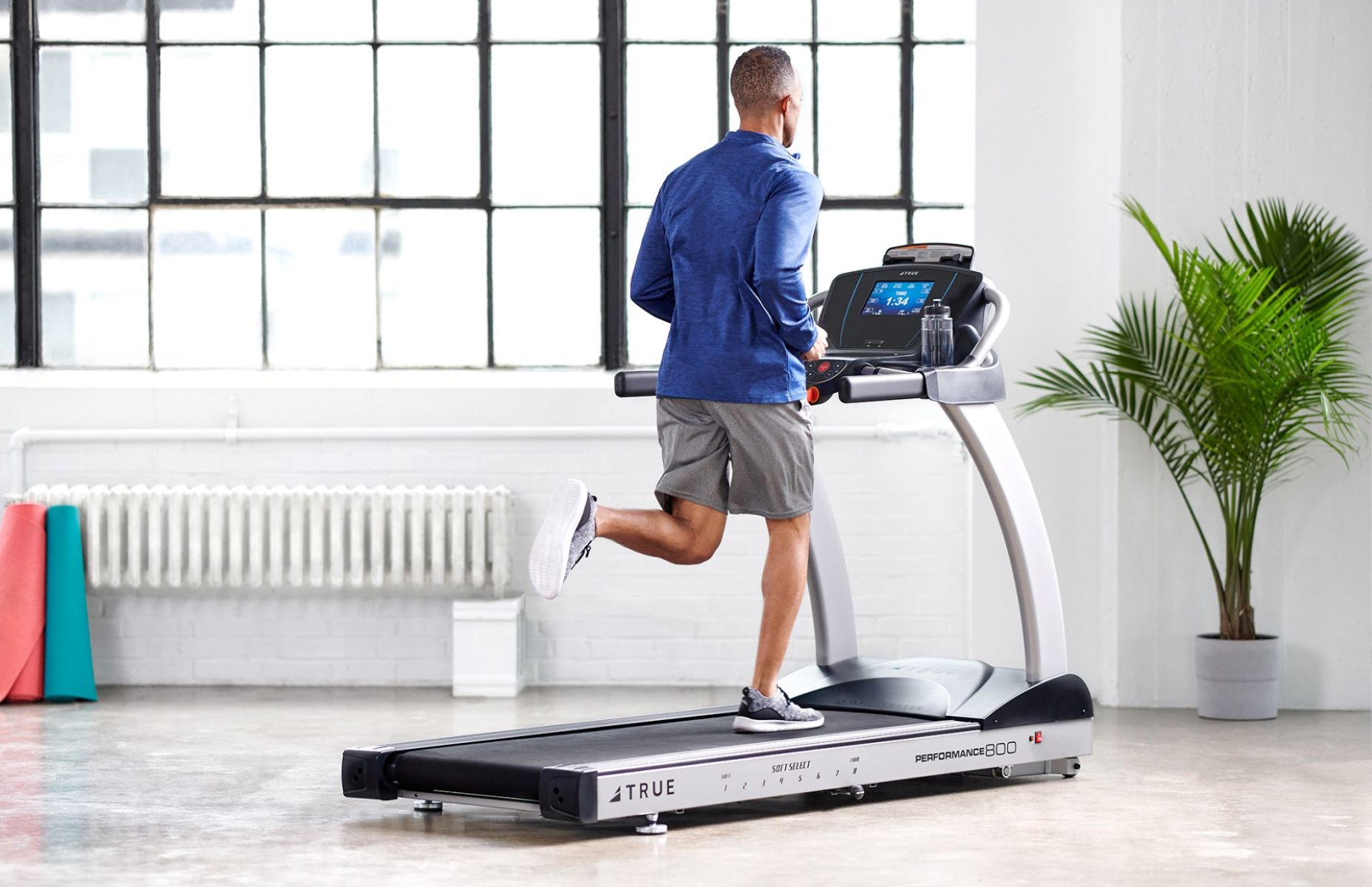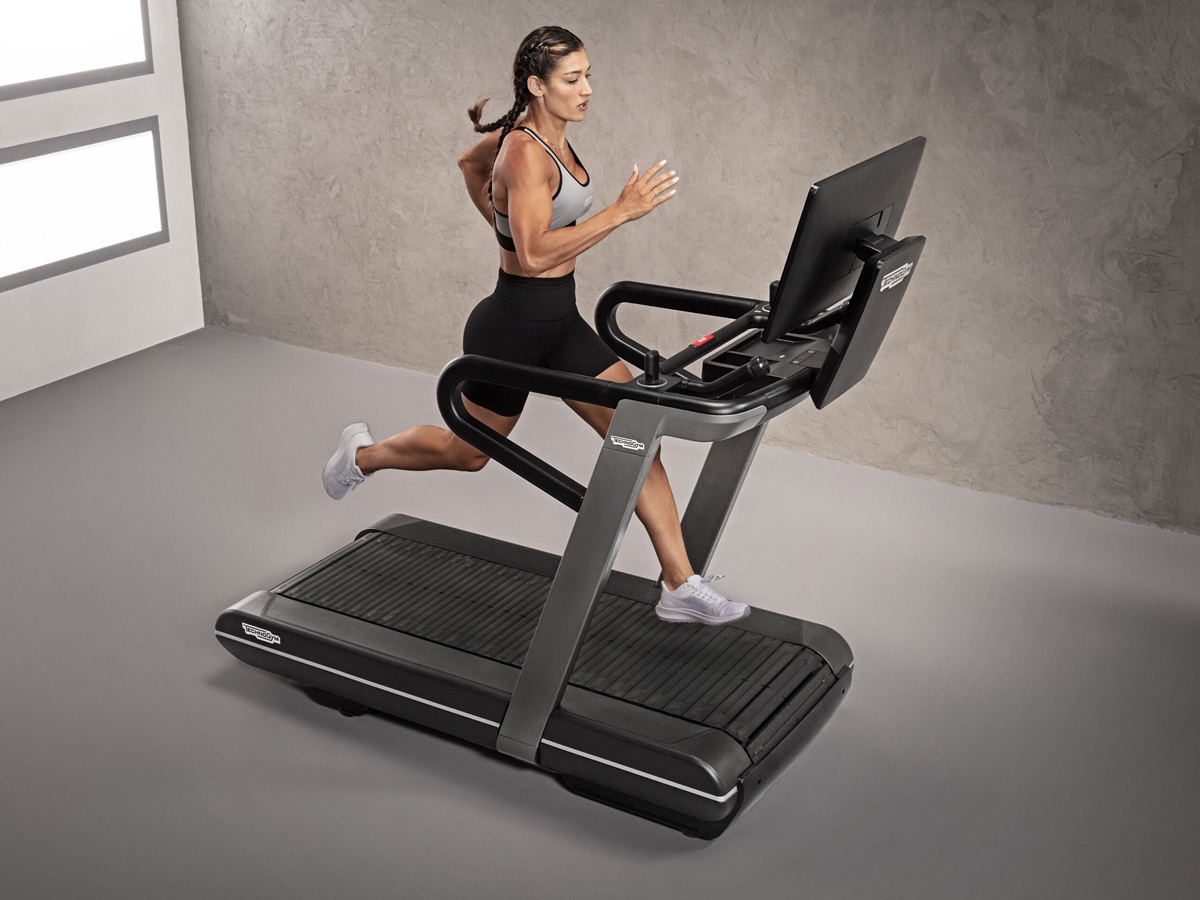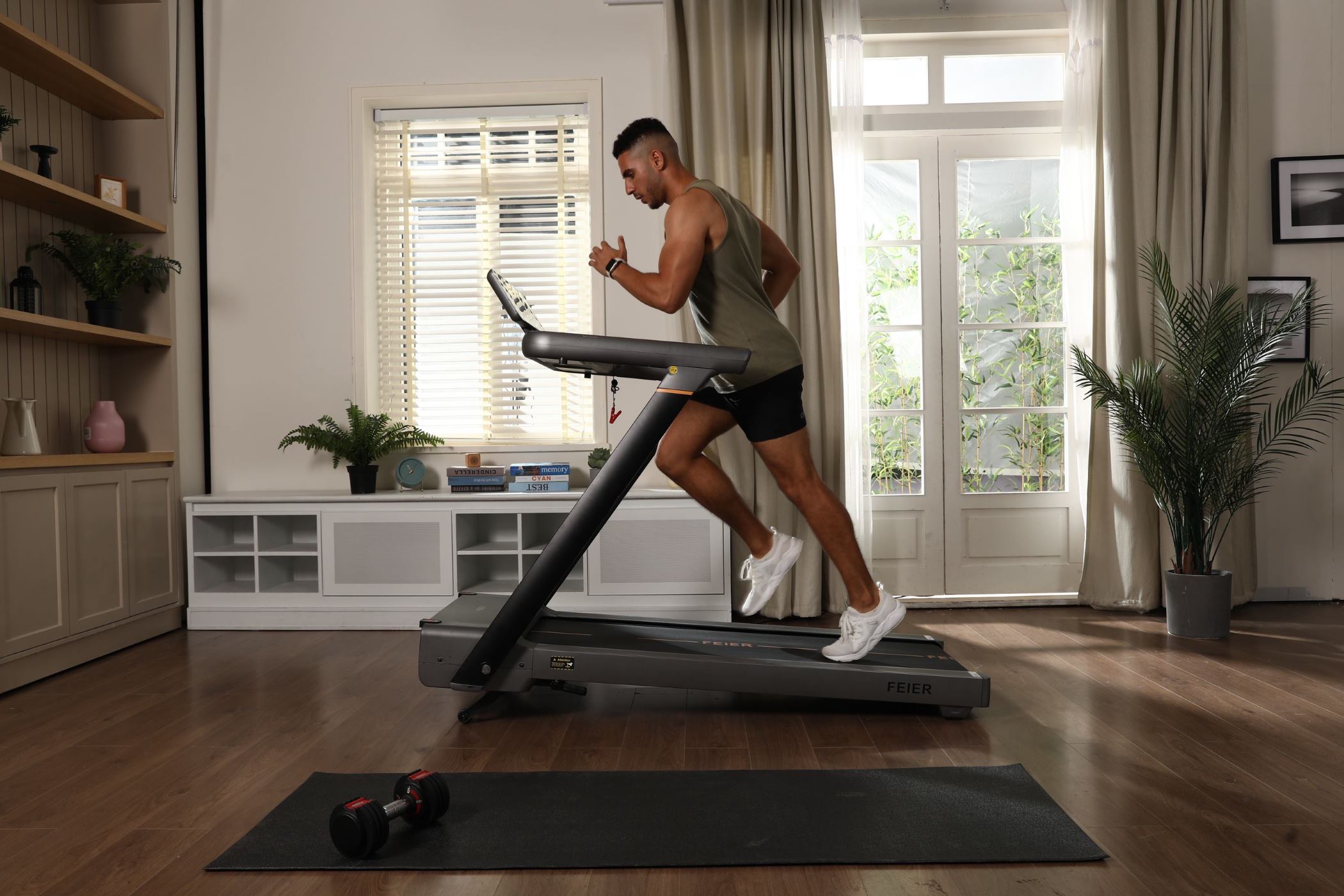Home>Misc>Featured>How Much Clearance Do You Need For A Treadmill
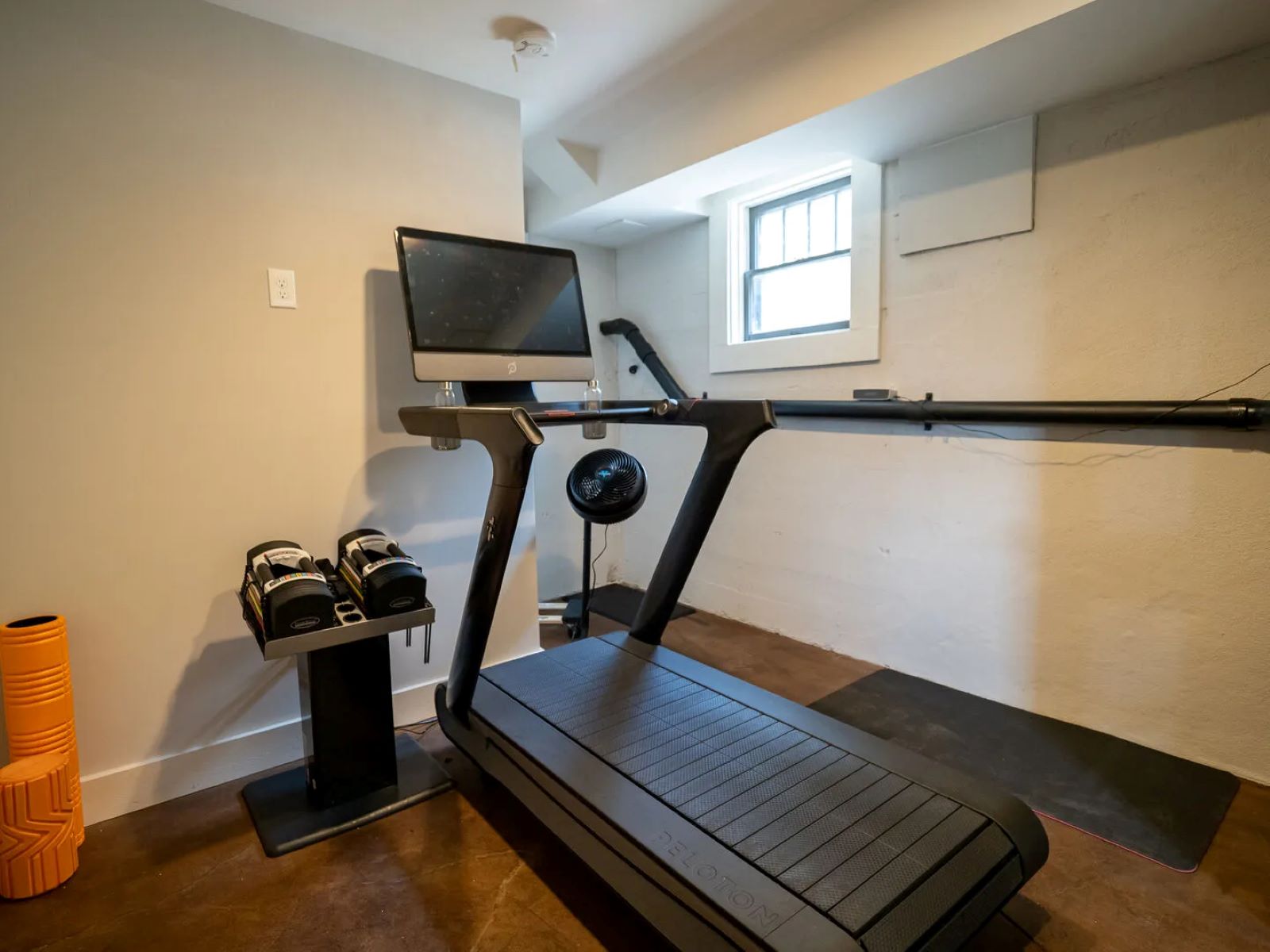

Featured
How Much Clearance Do You Need For A Treadmill
Modified: August 18, 2023
Find out the recommended clearance space needed for your featured treadmill. Ensure enough space for safe and effective workouts with this helpful guide.
Introduction
When it comes to setting up a treadmill in your home or gym, many factors should be taken into consideration to ensure a safe and efficient workout experience. One important aspect often overlooked is the clearance required for the treadmill. Clearance refers to the amount of space needed around the treadmill to allow for safe usage and access.
Proper clearance is essential to prevent accidents, injuries, and damage to the equipment or surroundings. In this article, we will explore the significance of clearance requirements for treadmills and provide guidelines on determining the appropriate amount of space needed.
Whether you are setting up a treadmill in a dedicated workout area, a corner of your living room, or a commercial gym, understanding clearance requirements is crucial for maximizing your safety and the functionality of the treadmill.
As you continue reading, you will learn about the factors that influence clearance recommendations, potential hazards of insufficient clearance, and tips for setting up adequate space around your treadmill. By following these guidelines, you can ensure a comfortable, safe, and effective workout experience without any hindrances or risks.
Understanding Clearance Requirements for Treadmills
Clearance requirements for treadmills are determined by various factors, including the design and dimensions of the treadmill, the type of workout being performed, and the user’s range of motion during exercise. It is important to consider these factors to ensure a safe and comfortable exercise environment.
First and foremost, the size and shape of the treadmill play a critical role in determining the clearance needed. Treadmills come in various sizes, from compact models designed for home use to commercial-grade machines found in gyms. Larger treadmills often require more space compared to smaller ones. Additionally, the shape of the treadmill can also influence the clearance required. For instance, models with extended handlebars or inclined decks might need extra space around them.
Another crucial factor to consider is the type of workout or exercise being performed on the treadmill. Different workouts may require different ranges of motion, which in turn affect the necessary clearance. For example, if you plan to perform intense sprints or high-speed intervals, you will need a wider clearance to allow for lateral movements and momentum changes. On the other hand, if you primarily engage in walking or light jogging, a narrower clearance may be sufficient.
Additionally, the user’s range of motion during exercise should be taken into account when determining clearance requirements. Some individuals have a wider gait or longer stride, which necessitates more lateral space on the sides of the treadmill. It is crucial to consider the individual’s comfort and safety by providing enough room for natural movements without feeling cramped or restricted.
Furthermore, the location of the treadmill within the workout space is also important. If the treadmill is placed in a corner or against a wall, additional clearance may be required to ensure ease of access and maneuverability. This is particularly important for folding treadmills that need to be unfolded and set up properly before use.
By understanding these clearance requirements and considering the various factors involved, you can ensure that your treadmill is set up in a way that allows for safe and efficient workouts, catering to the specific dimensions and needs of both the machine and the person using it.
Factors to Consider when Determining Clearance
When determining the appropriate clearance for your treadmill, several factors should be taken into consideration to ensure a safe and functional exercise space. These factors include the dimensions of the treadmill, the user’s height and stride length, the type of workout being performed, and the surrounding environment.
Firstly, the dimensions of the treadmill itself play a significant role in determining the required clearance. Consider the length, width, and height of the treadmill to determine how much space it will occupy when in use. Measure the dimensions accurately to avoid any surprises or issues when setting up the equipment.
Next, consider the height and stride length of the individuals who will be using the treadmill. Taller individuals or those with longer strides will require more space to ensure comfortable and unrestricted movement during workouts. Allow sufficient clearance in front and behind the treadmill to accommodate longer strides and prevent any obstacles or walls from becoming potential hazards.
The type of workout being performed on the treadmill is another important factor to consider. If the primary focus is on walking or slow jogging, a narrower clearance may be adequate. However, for high-intensity runs, long strides, or lateral movements, a wider clearance is essential to avoid feeling cramped and restricted. Take into account the intended intensity and range of motion of the workouts when deciding on the clearance requirements.
Additionally, it is important to consider the surrounding environment when determining clearance. Take note of any obstructions or potential hazards around the treadmill area, such as nearby furniture, walls, or electrical outlets. Make sure to provide a clear and safe path for entering and exiting the treadmill without any obstructions or trip hazards.
Lastly, if you are planning to use a folding treadmill, ensure that there is enough clearance to unfold and set up the machine properly. Folding treadmills typically require additional space both in front and behind the equipment to allow for the folding and unfolding process.
By considering these factors, you can determine the appropriate clearance for your treadmill, ensuring a safe and comfortable workout environment that caters to the dimensions and needs of both the machine and the user.
Minimum Clearance Recommendations for Treadmills
While clearance requirements can vary depending on the specific treadmill model, workout intensity, and individual preferences, there are some general guidelines to consider when determining the minimum clearance for your treadmill setup. These recommendations aim to provide a safe and comfortable workout environment for users of different heights and stride lengths.
Starting with the front of the treadmill, it is recommended to leave a minimum clearance of at least 6 feet (1.8 meters). This allows ample space for users to step onto the treadmill, comfortably extend their arms, and avoid any potential accidents or injuries. Additionally, this space accounts for the front portion of the treadmill that might extend beyond the running surface.
On the sides of the treadmill, it is advisable to leave a minimum clearance of 2-3 feet (0.6-0.9 meters) on each side. This provides enough space for users to maintain their balance during workouts and allows for lateral movements without feeling restricted or at risk of accidentally hitting nearby objects or walls.
When it comes to the rear of the treadmill, a minimum clearance of 2-3 feet (0.6-0.9 meters) is recommended. This allows users to step off the treadmill safely after their workout without any hindrances, and it provides enough space for the treadmill’s incline function, if applicable. Additionally, this clearance ensures that the user’s stride is not compromised and allows for a natural stride length during running or walking exercises.
It is worth noting that these minimum clearance recommendations are just guidelines. If you have sufficient space available, it is always beneficial to provide more clearance to enhance user comfort and safety. Consider factors like the size of the treadmill, the height and stride length of the users, and the intended intensity and range of motion of the workouts when deciding on the final clearance requirements.
It is vital to remember that having insufficient clearance around the treadmill can lead to accidents, injuries, or damage to the equipment. Therefore, it is recommended to err on the side of caution and provide adequate space to ensure a safe and enjoyable workout experience for everyone using the treadmill.
Potential Hazards of Insufficient Clearance
Insufficient clearance around a treadmill can pose various hazards and risks to both the user and the equipment. Failing to provide enough space can lead to accidents, injuries, and damage that could have been easily prevented with proper clearance. Understanding the potential hazards will emphasize the importance of ensuring adequate space around the treadmill.
One common hazard of insufficient clearance is the risk of tripping or stumbling. When there is not enough space in front of the treadmill, users may find it challenging to step onto the machine comfortably. This can lead to missteps, falls, and potential injuries, such as sprains or fractures. Sufficient front clearance allows users to enter and exit the treadmill safely without any obstacles or hindrances.
Another potential danger arises from inadequate side clearance. When users are performing workouts that involve lateral movements or extensive arm swings, having too little space on the sides can result in accidental collisions with nearby objects, walls, or furniture. This can lead to injuries, damage to the treadmill, or even create a domino effect where the user is thrown off balance and falls.
Insufficient rear clearance is yet another hazard. When there is not enough space behind the treadmill, users may find it challenging to step off the machine safely, especially when fatigued after a workout. This can lead to falls or trips that can result in injuries. Additionally, rear clearance is crucial for treadmills with incline functionality, as it allows for the full range of inclines without any hindrances.
Moreover, having inadequate clearance can compromise the ease of access and maneuverability around the treadmill. Without enough space, it can be challenging to perform routine maintenance tasks, such as cleaning or lubricating the treadmill. It may also impede the folding and unfolding process for folding treadmills, potentially causing damage if not properly set up or stored.
Furthermore, insufficient clearance can result in damage to the treadmill itself. When the equipment is squeezed into a tight space, it can cause wear and tear on its components, including the frame, display panel, and handrails. This can lead to premature deterioration or malfunctioning of the treadmill, decreasing its lifespan and requiring costly repairs or replacements.
To avoid these potential hazards, it is crucial to provide adequate clearance around the treadmill. By doing so, you can ensure the safety of users, protect the equipment from damage, and create a comfortable and efficient workout environment that enhances the overall exercise experience.
Tips for Setting Up Adequate Clearance for Your Treadmill
Setting up adequate clearance for your treadmill is essential for maintaining a safe and functional exercise space. By following these tips, you can ensure that you provide sufficient room around the treadmill to prevent accidents, injuries, and damage to both the users and the equipment.
1. Measure the available space: Start by measuring the area where you plan to set up your treadmill. Take into account the length, width, and height of the space to ensure that it can accommodate the dimensions of the treadmill and allow for comfortable movement around it.
2. Consider user height and stride length: If there are multiple users with varying heights and stride lengths, take this into account when determining the necessary clearance. Allow sufficient space for users to extend their arms, take long strides, and maintain balance during workouts.
3. Follow manufacturer’s recommendations: Consult the manufacturer’s guidelines or user manual for your specific treadmill model. They often provide recommended clearance dimensions that are tailored to the machine’s design and functionality.
4. Create a designated workout area: If possible, dedicate a specific area for your treadmill. This allows for easier setup, ample surrounding space, and reduced risks of collisions with other furniture or obstacles.
5. Provide front clearance: Ensure that there is enough space in front of the treadmill for users to comfortably step onto the machine and extend their arms without obstruction. A minimum clearance of 6 feet is recommended to allow for a safe entry and exit.
6. Allow side clearance: Provide a minimum clearance of 2-3 feet on each side of the treadmill to accommodate lateral movements and reduce the risk of accidental collisions with nearby objects or walls.
7. Ensure rear clearance: Leave a minimum of 2-3 feet of space behind the treadmill to allow for safe stepping off the machine and to accommodate any incline features without hindrances.
8. Check for obstacles: Identify and remove any potential hazards or obstacles near the treadmill area, such as furniture, cords, or decorative items. This will create a clear and safe workout environment.
9. Consider folding treadmills: If you have a folding treadmill, ensure that there is enough space for easy unfolding and setup. Allow additional clearance both in front and behind the treadmill to accommodate the folding mechanism.
10. Regularly assess and adjust clearance: Periodically reassess the clearance around your treadmill to ensure that it remains adequate. Make any necessary adjustments if the space becomes cluttered or if the user’s needs change.
By following these tips, you can set up a treadmill with the appropriate clearance, creating a safe and comfortable workout space that promotes effective exercise and minimizes the risk of accidents or damage to the equipment.
Conclusion
When setting up a treadmill, considering the clearance requirements is crucial for ensuring a safe and efficient workout environment. Adequate clearance allows users to enter, operate, and exit the treadmill comfortably, reducing the risk of accidents, injuries, and damage to both the users and the equipment.
Factors such as the dimensions of the treadmill, the type of workout being performed, and the user’s height and stride length all play a role in determining the necessary clearance. By understanding these factors and following the recommended guidelines, you can create an optimal exercise space that caters to the specific dimensions and needs of your treadmill setup.
Insufficient clearance can lead to a range of potential hazards, including tripping, collisions with nearby objects, restricted range of motion, difficulty in accessing and maintaining the treadmill, and damage to the equipment. These risks can be avoided by providing appropriate space around the treadmill.
To ensure adequate clearance, measure the available space, consider user height and stride length, and follow the manufacturer’s recommendations. Creating a designated workout area, checking for obstacles, and regularly assessing and adjusting the clearance are also important steps to maintain a safe and functional exercise space.
By setting up your treadmill with proper clearance, you can enjoy a comfortable and enjoyable workout experience while minimizing the risk of accidents or damage. Prioritizing safety when it comes to treadmill clearance is an investment in your well-being and the longevity of your equipment.
So, take the time to measure, plan, and set up adequate clearance for your treadmill. By doing so, you can create an environment that promotes safe and effective workouts, allowing you to achieve your fitness goals with peace of mind.

